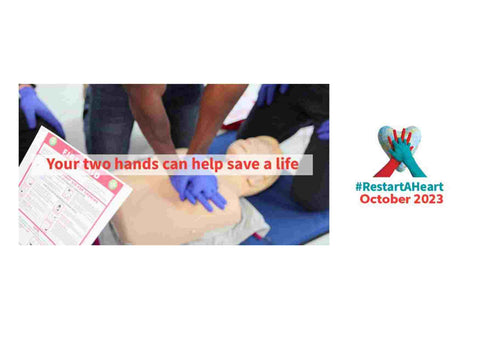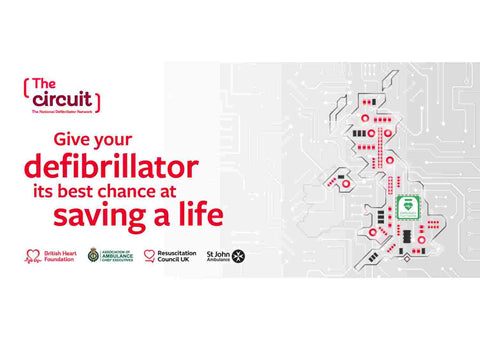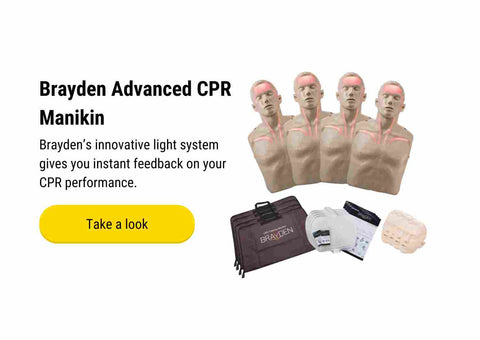Fewer than 1 in 10 people will survive an out-of-hospital cardiac arrest.
But early CPR and Defibrillation can more than double their chances of survival.
Restart a Heart Day aims to equip more people with the knowledge to perform CPR and use a defibrillator.
The Resuscitation Council and British Heart Foundation’s annual campaign wants to help save more lives by increasing awareness of cardiac arrest and CPR.
This year’s campaign focuses on equal access to defibrillators. A person suffering from a cardiac arrest has a greater chance of survival if a defibrillator is used.
How do I help someone in cardiac arrest?
If you discover someone has stopped breathing and has collapsed, follow these steps:
Approach the person and check for any dangers.
See if the person is unresponsive by shaking them gently.
Look and listen for signs of normal breathing by checking the rise and fall of their chest.
Shout for help.
Call 999 and put the phone on speaker. The operator will help you.
Perform CPR by starting chest compressions
The call handler will tell you where the nearest defibrillator is. Ask someone to locate it for you. Never leave the patient to look for a defib.
How do I perform CPR?
You don’t need any training to perform CPR, as the 999 operator will talk you through the steps.
However, training will help you feel confident performing CPR. First Aid courses are available throughout the country where you can practise on a manikin, just the manikins below.
Want to learn CPR in 15 minutes? Have a go at RevivR, the British Heart Foundation’s CPR training tool. It’s free and will increase your confidence should you ever need to help someone in cardiac arrest.
All you need is your phone and a pillow.
We had a go and you can too.
The Resuscitation Council has simple steps to perform CPR here
What is a defibrillator?
A defibrillator, often called an Automated External Defibrillator or AED, is a portable machine that can detect abnormal heart rhythms and deliver the shock that’s needed to help restore a normal rhythm.
Do I need training to use a defibrillator?
The simple answer is no. A defib is simple to use. If you believe a person is in cardiac arrest and have located a defibrillator, the first step is to attach the two pads to the chest. A diagram on the defib will show you where to place the pads.
Switch on the defibrillator which will analyse the person’s heart rhythm. The defibrillator will now talk to you and give you instructions. If the person requires a shock, depending on the type of unit, the defib will ask you to stand clear so it can deliver the shock, or it will ask you to press a button to shock the person’s heart.
As soon as the shock has been delivered, the defib will ask you to resume with chest compressions.
Can I hurt someone with a defibrillator?
A defibrillator will only deliver a shock if its initial assessment shows the person needs it. If they don’t need a shock, the unit will tell you to continue with CPR. Defibrillators are very reliable. Following their instructions is the best way to help save a person’s life.
Where’s my nearest defibrillator?
Defibrillators can be widely found in public places, workplaces and community centres. When you call 999, the operator will be able to tell you where your nearest defibrillator is.
It’s a good idea to know where your local defibrillator is in relation to your home or workplace, should you ever need it.
A national defibrillator network called The Circuit has been created where defibs can be registered. This allows you to locate your nearest defib.
We have a defibrillator outside our HQ on a busy industrial estate and we have added it to The Circuit.
How can I practise CPR?
If you want to increase your confidence with CPR and using a defibrillator, a First Aid course is the best place to start.
During the course, you will get the chance to practise chest compressions on CPR manikins and use specialist training defibrillators.
Our range of CPR manikins and defib trainers are widely used by First Aid trainers.
































